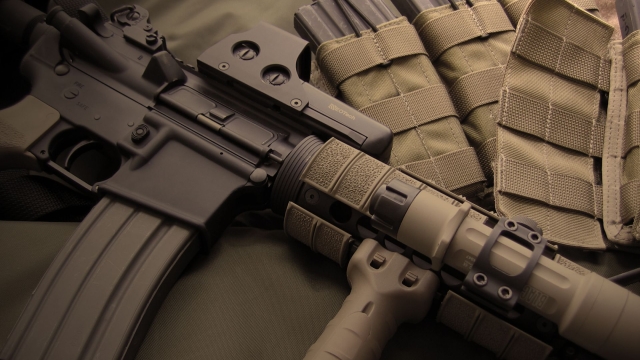Lock, Load, and Learn: Exploring the World of Firearms
Welcome to the thrilling world of firearms, where precision meets power, and each shot holds the potential to make history. In this article, we will delve into the fascinating realm of firearms, exploring their mechanisms, their role in society, and the impact they have had on shaping our world. From the intricacies of ammunition to the evolution of these remarkable tools, join us on this journey as we unlock the secrets of firearms and embark on a captivating exploration of their significance throughout history. So, let’s load our knowledge and prepare to embark on an eye-opening journey into the world of firearms.
Understanding Ammunition
In the world of firearms, ammunition plays a crucial role. It is the lifeblood that keeps these powerful weapons functioning efficiently and effectively. Understanding different aspects of ammunition is essential for any firearm enthusiast or aspiring gun owner. In this section, we will delve into the intricacies of ammunition, shedding light on its components, types, and crucial factors to consider.
First and foremost, ammunition consists of four basic components: the bullet, the casing, the propellant, and the primer. Each of these elements plays a vital role in the firing mechanism of a firearm. The bullet, often misconceived as the entire round, is actually the projectile that is expelled from the barrel when the firearm is fired. The casing acts as a container for all the other components, providing structural support and housing the bullet. Inside the casing, we find the propellant, which is the substance responsible for generating the energy required to propel the bullet forward. Lastly, the primer is a small ignition device located at the base of the casing, initiating the combustion of the propellant.
When it comes to types of ammunition, there is a wide variety available to suit different firearms and purposes. It is crucial to select the right ammunition for your firearm to ensure optimal performance and safety. Common types of ammunition include full metal jacket (FMJ) rounds, hollow point rounds, and specialty rounds designed for specific purposes like self-defense or hunting. Understanding the purpose and characteristics of each type is important in making an informed decision.
Several factors should be considered when selecting ammunition. The caliber, or bullet diameter, is a significant factor as it must match the firearm’s chamber dimensions to ensure proper fit and function. Another critical consideration is the intended use, whether it be target shooting, self-defense, or sporting purposes. Factors such as the bullet weight and design also influence the ammunition’s performance and recoil. Additionally, it is essential to adhere to local laws and regulations regarding the possession and use of specific types of ammunition.
In conclusion, ammunition forms the backbone of the firearms world. Understanding its components, types, and factors to consider is crucial for anyone venturing into the realm of guns. By grasping the essentials of ammunition, firearm enthusiasts can make informed decisions and ensure safe and effective shooting experiences.
Types of Firearms
-
Handguns:
Handguns are compact firearms that are designed to be held and operated with one hand. They are commonly used for personal protection, law enforcement, and sport shooting. Handguns can be further classified into two main categories: pistols and revolvers. Pistols are semi-automatic firearms that use a magazine to hold and feed ammunition. Revolvers, on the other hand, have a rotating cylinder that holds the ammunition. -
Rifles:
Tactical.gear Near Me
Rifles are long-barreled firearms that are designed to be fired from the shoulder. They are widely used for hunting, target shooting, and military applications. Rifles are known for their high accuracy and longer effective range compared to handguns. There are various types of rifles, such as bolt-action, semi-automatic, and fully automatic rifles. Bolt-action rifles require manual operation to load and unload ammunition, while semi-automatic and fully automatic rifles are capable of firing multiple rounds without manual intervention. -
Shotguns:
Shotguns are firearms that are designed to fire a cluster of small projectiles called shot or a single slug. They are primarily used for hunting birds, clay target shooting, and self-defense. Shotguns have a smoothbore barrel, which means there are no rifling grooves inside the barrel. This allows the shot to disperse over a wider area, making shotguns effective for close-range engagements. Shotguns can be further categorized into pump-action, semi-automatic, and break-action shotguns, depending on their action mechanism for loading and ejecting shells.
Note: Firearms should always be handled responsibly and in accordance with local laws and regulations.
Safety and Responsibility
The safe and responsible use of firearms is of utmost importance. It is crucial for individuals who own firearms to understand and follow proper safety protocols to ensure the well-being of themselves and others. By remaining cautious and informed, we can all contribute to a safer environment.
One essential aspect of firearm safety is proper storage. Firearms should be securely stored in a locked cabinet or safe, inaccessible to unauthorized individuals. Keeping ammunition separate from the firearms adds an extra layer of safety.
Additionally, responsible ownership includes being aware of the laws and regulations surrounding firearms. Understanding the legal requirements for purchasing, carrying, and using firearms can prevent potential legal issues and ensure compliance with local regulations.
Lastly, regular training and education are fundamental in promoting responsible firearm use. Taking part in certified training courses or seeking guidance from professionals can enhance one’s knowledge of firearm safety and proficiency. Continuous learning helps individuals develop the skills needed to handle firearms safely and responsibly.
By prioritizing safety and responsibility, firearm owners can contribute to a harmonious and secure society. Ensuring proper storage, adhering to legal requirements, and consistently seeking training are key steps towards fostering a culture of responsible firearm usage.



